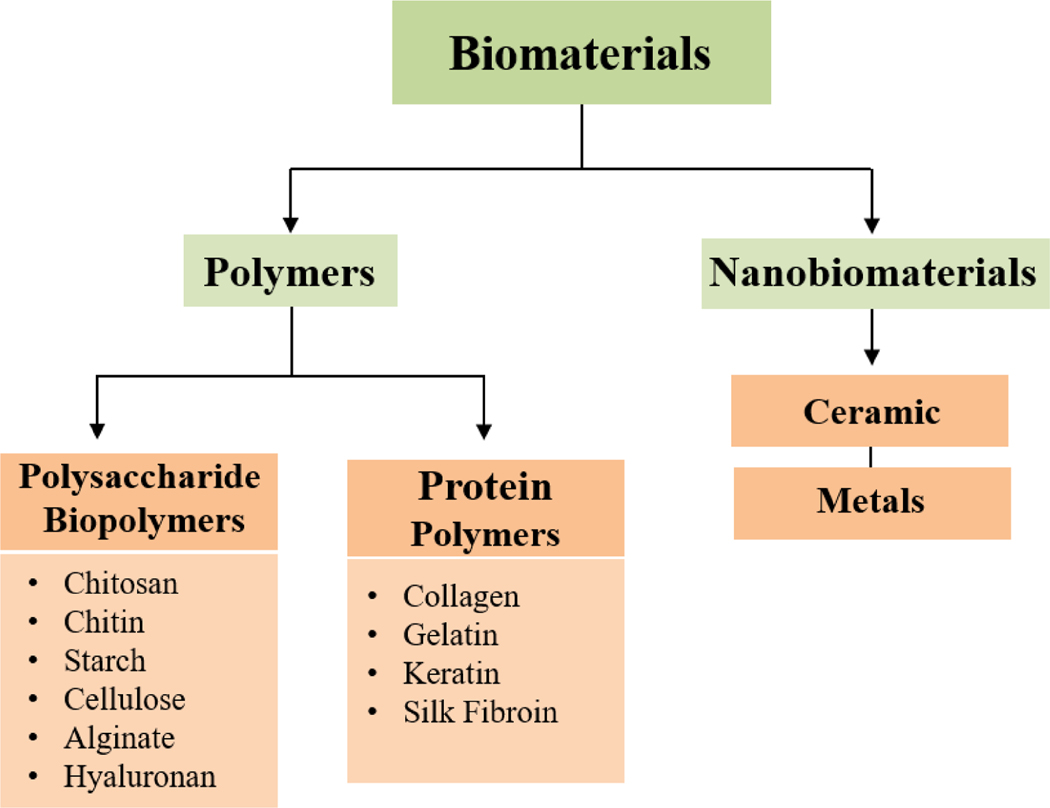Figure 3:
Schematic representation of different types of biomaterials used for Ideal wound dressings. This can be categorized very quickly into polymers and nanobiomaterials. Polysaccharides and proteins are two main players that represent the polymer class. Metals and metal oxide are the only class, which has included under nanobiomaterials. Chitosan, cellulose, starch and alginate are the most commonly used and formed polysaccharide biopolymers. Proteins show unique functionalities and have many applications in both biomedical and material sciences. Proteins can form films and some proteins are employed as wound and burn dressings such as collagen, gelatin, keratins and silk fibroin.

